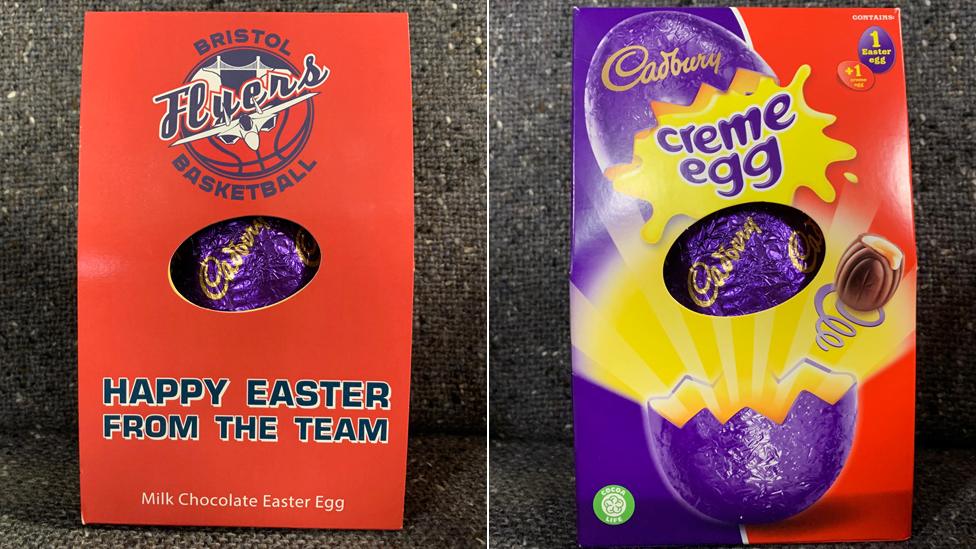How the hollow chocolate Easter egg was produced in Bristol
- Published

Over the last 150 years, bigger, hollow eggs have become tradition
Chocolate company J. S. Fry & Sons produced the first hollow chocolate egg in 1873, 150 years ago.
The firm made chocolate by mixing cocoa fat with cocoa powder and sugar, which they poured into egg moulds.
Hugh Evans, chocolate historian and archivist at Fry's, said there was "pride in this history" that has now become a tradition.
"It is a shame that this chocolate manufacturing base in Bristol is gone," he said.
The company was founded by Joseph Fry in Bristol in 1728 and moved to Somerdale in Keynsham in 1923.
The Somerdale factory - which featured the Cadbury's logo after Fry's was bought out - closed in 2011 and the production of its products moved to Poland.
Before Fry's manufactured the hollow chocolate egg, people all over Europe gave each other small solid chocolate eggs with chocolate in the centre.
Over the last 150 years, bigger, hollow eggs have become tradition.

Lisa's Chocolate in Montpelier still make their own chocolate eggs
Lisa's Chocolate in Montpelier, Bristol, still makes its own chocolate eggs.
Lisa González Diaz, owner of Lisa's Chocolate, told BBC Radio Bristol how hollow chocolate eggs are made.
She says first, she melts the chocolate and polishes the mould, then she pours the chocolate into the mould.
The mould then goes into the fridge until the chocolate hardens and the two halves can be joined to form an egg.
"Chocolate has a proven link to childhood pleasures, being given buttons as a child is what we remember," Mr Evans said.
"And we all remember having Easter eggs."

Follow BBC West on Facebook, external, Twitter, external and Instagram, external. Send your story ideas to: bristol@bbc.co.uk , external
- Published17 April 2019
